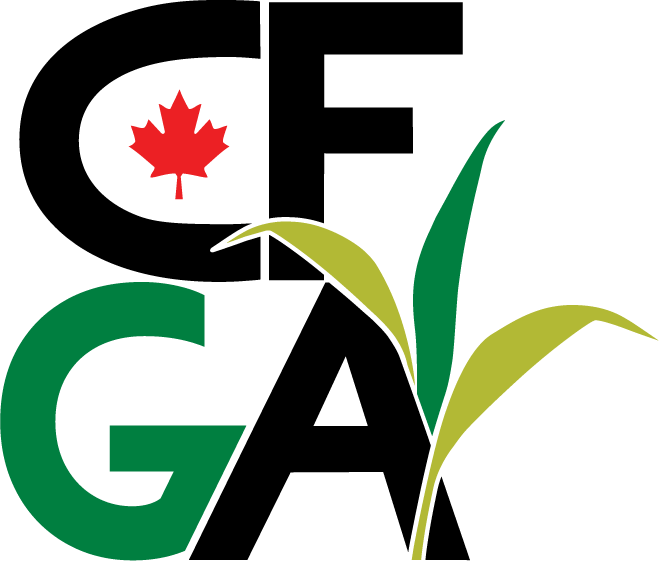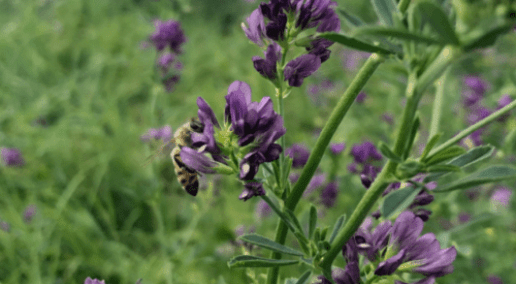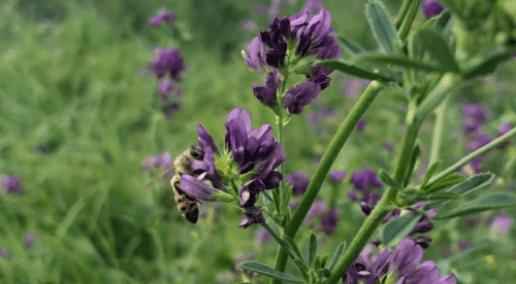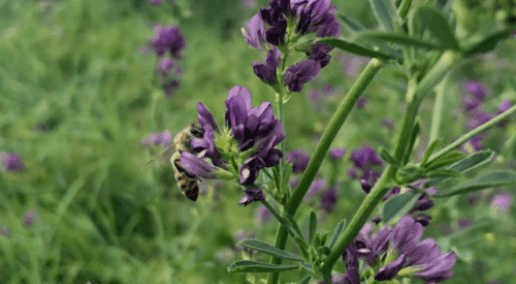Ken Wall, a Federated Co-op advisor and forage specialist for the Southern Saskatchewan and Southern Alberta Prairie Regions, presented at the CFGA’s 14th annual conference, Forage Resilience in a Changing Landscape: Manage risk. Overcome challenges. Discover opportunities. on Nov. 29, 2023. His presentation focused on the many benefits of growing forages in a cropping rotation, with a special look at salinity.
There are many benefits of incorporating forages in crop rotations. These include increasing soil fertility (particularly nitrogen (N)), increasing grain yields, recycling deeply leached nutrients, breaking pest and weed cycles, promoting beneficial soil biology, reducing soil compaction and promoting deeper carbon sequestration. Specific forage mixes are also able to handle adverse conditions such as drought, flood, salinity and alkalinity.
By growing forages in rotation, we can help decrease the use of N fertilizer. Having forage legumes in rotation, even for a short time, can generate significant soil fertility benefits. As such, Ken said forages will be a major part of the solution for meeting the Canadian government’s goal of 30 per cent reduction in emissions from N fertilizer by 2030.
Grain yields are known to increase following a rotation of legumes. Wheat yield has been found to be 45 per cent higher when grown on alfalfa stubble and 60 per cent higher when grown on red clover stubble when compared to a barley-flax rotation. Legumes also build soil quality by increasing soil organic matter, as well as improving water infiltration and drainage. Perennial legumes can extract deep leached nutrients such as N and potassium (P) as deep as 10 feet down.
Root-zone salinity is an issue affecting many lands, to varying degrees, across Canada. Ken explained, salinity is a water management problem. When the water table rises to the soil surface, the groundwater salts are left behind at the soil surface when evaporation occurs. To control this salinity, you must manage the water. Forages help to lower the water table through their deep roots, improving drainage and have relatively high-water use. Ken also presented a handy table for producers of root-zone salinity classification levels and the specific crop types that can grow under these conditions.
Ken ended his presentation by talking about the strong economic case for growing forages. With hay prices being $200 to $250 per tonne, it is not hard to convince a producer to grow alfalfa or other forages that can also be grown for seed revenue.
He also provided an overview of forage funding opportunities in Saskatchewan. First, the Sustainable Canadian Agriculture Partnership – Resilient Agricultural Landscapes Program (RALP) - Seeding Forage – Tame Forage Stream - provides funding for seeding forages over five years. Second, Duck Unlimited Canada also provides a forage seeding program that converts marginal land to perennial forages to receive $60 per acre. Farmers can stack these funding programs and receive up to $200 per acre for seeded forage.
Additional Information:
Funding: Ducks Unlimited Canada Forage Program
Funding: Sustainable Canadian Agricultural Partnership (RALP: Seeding Forage)
Conference recordings
If you would like to see all of Ken’s presentation, you can purchase access to it, and all of the recordings of the 2023 conference proceedings, by visiting the registration page here. To read more about each speaker, check out the CFGA 2023 Conference agenda.
Note, if you attended the 2023 conference, the recordings are available for free to those who registered for the conference. For more information, email [email protected].
Back to Conference 2023



Leave a Comment